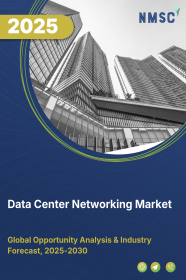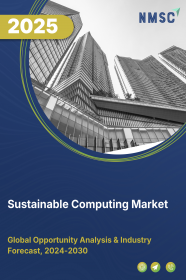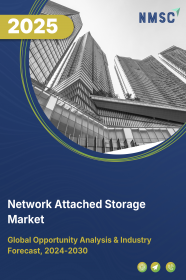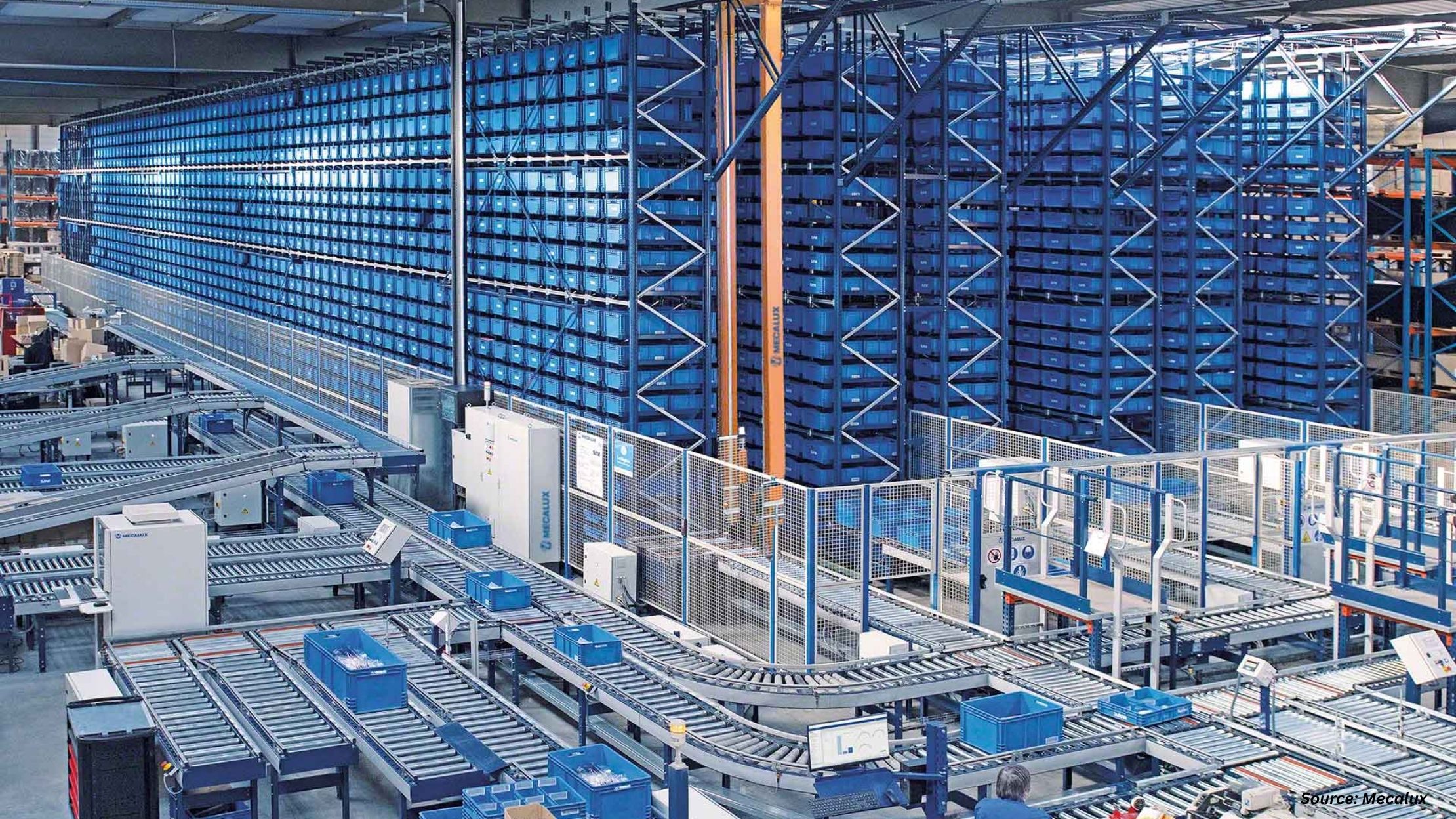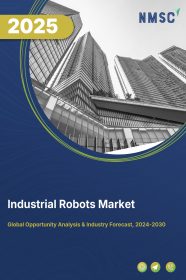
Industrial Robots Market by Robot Type (SCARA Robots, Articulated Robots, Collaborative Robots, Cartesian Robots, Parallel Robots, and Other Robots), by Mobility (Fixed, and Mobile), by Application (Material Handling, Assembling, Processing, Welding & Soldering, Pick & Place, and Others), and by End User – Global Opportunity Analysis and Industry Forecast 2024-2030
Industry: ICT & Media | Publish Date: 14-Feb-2025 | No of Pages: 459 | No. of Tables: 382 | No. of Figures: 358 | Format: PDF | Report Code : IC428
Market Definition
The Industrial Robotics Market size was valued at USD 21.77 billion in 2023 and is predicted to reach USD 47.86 billion by 2030 with a CAGR of 14.0% from 2024-2030. Industrial Robotics are defined as mechanical machines that is designed to perform various industrial related tasks that includes material handling, processing, assembling, pick and place items, and other industrial use. The advantage of industrial Robotics lie in its flexibility and automation as it can be reprogrammed for performing varying robotic application. Industrial Robotics contains an articulated frame of sensors, controllers and actuators that help in doubling up enhancement of industrial efficiency. The application of industrial Robotics have fastened the production process, enhanced safety and reduced industrial cost. The efficiency and flexible automatic feature of the industrial Robotics makes it an indispensable component of the modern industrial age.
Market Dynamics and Trends
The rising adoption of industry 4.0, followed by integration of digital technology and automation in manufacturing processes is driving the demand of industrial robot market. According to UNCTAD Report, 2022, for high tech manufacturing and research and development are critical element of industry 4.0 where the U.S. and China collectively account for 75% of the global spending on the Internet of Things (IoT). Industrial robot help in interconnectedness of machines, real time data analytics and autonomation as they are vital elements of industry 4.0 accelerating its demand in the market.
Additionally, the significant growth of the automotive industry is accelerating the demand for industrial robot. According to the European Automobile Manufacturer Association, 2023, every year around 13.1 million automobiles is manufactured that contributes to around 7% to the total GDP of EU. Automotive manufacturing involves high-volume production lines with repetitive tasks such as welding, painting, assembly, and material handling. It accelerates the demand for industrial robots by offering high-speed and precise operation, that helps automotive industry to meet the production targets efficiently.
For instance, in June, 2023, Guy’s and St Thomas’ become the first Trust in the UK to adopt the newest surgical robot that includes the Hugo robotic-assisted surgery (RAS) system. Robotic assisted surgery involve minimal invasive leading to patients’ spending less time in hospital and faster recovery boosting up the demand of industrial robot market.
Moreover, the rising demand of autonomation in food & beverage industry is further accelerating the market demand of industrial robot. The manufacturers are increasingly turning to automation solutions through use of industrial robot to streamline production processes, improve efficiency, and ensure product quality and safety leading to its increasing demand in food & beverage industry. In April, 2023, Doosan Robotics launched NSF certified line of cobots that are specifically created for food & beverage industry. The light weight and slim design of the E- series robot can be easily installed in workspaces of Food & Beverage Industry.
However, the high expense associated with installation of industrial Robotics along with requirement of expertise training and efficiency in operating the Robotics acts as major constraints in growth generation of the market.
On the other hand, the integration of AI and machine learning algorithm in industrial robot is expected to generate significant growth opportunities for the market in the forthcoming years. AI and machine learning algorithm would make Robotics learn from their experiences and automatically adapt to change environment by taking autonomous decisions.
Market Segmentation
The industrial Robotics market is segmented on the basis of type, application, industry, end use and region. On the basis of type the market is divided into articulated, SCARA, cylindrical, cartesian/linear, parallel and other. On the basis of application, the market is bifurcated into material handling, assembling, processing, welding and soldering, pick and place and others. On the basis of industry, the market is divided into automotive, electrical and electronic, healthcare and pharmaceutical, food and beverage, hospitality, metal & machinery and others. Regional breakdown and analysis of each of the aforesaid segments include regions comprising North America, Europe, Asia-Pacific, and RoW.
Geographical Analysis
Asia Pacific holds the dominant share in the industrial Robotics market and is projected to maintain its dominance throughout the forecast period. The leading countries of the region such as Japan, China, South Korea and India are at forefront of adoption of industrial robot in various sectors of the economy that includes healthcare, food & beverage, transportation and others. According to the Information Technology and Innovation Foundation Report of March, 2024 depicts that China is the leading market of industrial Robotics by volume. China had installed 18% more industrial Robotics per manufacturing workers. Around 52% industrial Robotics of the world are installed in China reflecting about the increasing adoption of industrial Robotics in manufacturing sector. Features of industrial robot that includes automation, quick performance and minimizing error capacity is increasing its adaptability in the market.
Moreover, the rising government initiatives such as tax benefits and incentives for adoption of robotics in industries in the region is accelerating the demand of industrial Robotics market. The tax benefit provided by the government doubled up the installation of industrial Robotics in various industrial sectors in Asia Pacific region. According to the International Federation of Robotics report as of January 2023, the Japanese government invested USD 930.5 million under the "New Robot Strategy" to position the country as the world's leading hub for robot innovation. This kind of governmental benefits make it more affordable for businesses to invest in robotic systems, boosting its demand in the region.
On the other hand, the European region is expected to show a steady rise in the industrial Robotics market driven by the hospitality industry's focus on personalizing the guest experience. With hospitality being a significant sector of the European economy, establishments such as hotels and restaurants are increasingly leveraging industrial Robotics to enhance customer service and satisfaction. These Robotics are deployed for various tasks, including guest interactions, room service delivery, and housekeeping, providing a unique and tailored experience to guests. For instance, in 2023 Spark EPOS launched its first hotel robot in UK that is first of its kind. The Butler BotW3 is designed to assist with various tasks such as room service delivery, concierge services, and housekeeping, thereby revolutionizing the way hotels operate and enhancing customer satisfaction.
Moreover, the growing adoption of stringent regulations aimed at improving workplace safety and reducing labour costs are incentivizing companies operating in the countries of European region to invest in robotic solutions accelerating its market demand. In June 2021, the European Commission adopted the EU strategic framework on health and safety at work 2021-2027 to adopt key actions needed to improve workers' health and safety. Industrial Robotics can perform tasks in hazardous environments or handle dangerous materials, reducing the risk of injuries to human workers that leads to its increasing demand among the industries to ensure workplace safety of the workers in the region.
Competitive Landscape
The industrial Robotics industry comprising of various market players such as ABB Ltd., Yaskawa Electric Corporation, Mitsubishi Electric Corporation, Nachi-Fujikoshi Corp., Comau Automation Company, KUKA Robotics Company, Fanuc Corporation, Denso Corporation, Kawasaki Heavy Industries, Ltd., Omron Corporation. These market players are adopting various strategies including product launches and business expansions to stay competitive and maintain their market positions.
For instance, in September, 2023, ABB launched OptiFact software platform and IRB1090 industrial education robot making it a global launch in CIFF, 2023. The Opti Fact software platform launched by ABB Ltd. aid business organization to collect and analyse data directly factory floor to enhance decision making and performance. The new IRB 1090 educational robot equipped the next generation by making them aware about new skills to thrive in the field of automation.
Moreover, in September, 2023, Fanuc Corporation announced the expansion of its business in Oakland that is scheduled to be open in spring of 2024. The opening of the new west campus would increase its operation space to 2 million sq. ft. would enhance its operation and would increase the collaboration of Fanuc Corporation with other industrial sector such as food & beverage, aerospace, electrical, medical and others.
Key Benefits
-
The report provides quantitative analysis and estimations of the industrial Robotics market from 2024 to 2030, which assists in identifying the prevailing market opportunities.
-
The study comprises a deep dive analysis of the industrial Robotics market including the current and future trends to depict prevalent investment pockets in the market.
-
Information related to key drivers, restraints, and opportunities and their impact on the industrial Robotics market is provided in the report.
-
Competitive analysis of the players, along with their market share is provided in the report.
-
SWOT analysis and Porters Five Forces model is elaborated in the study.
-
Value chain analysis in the market study provides a clear picture of roles of stakeholders.
Key Market Segments
By Type
-
Articulated
-
SCARA
-
Cylindrical
-
Cartesian/Linear
-
Parallel and other
By Application
-
Material Handling
-
Assembling
-
Processing
-
Welding and Soldering
-
Pick and Place and others
By Industry
-
Automotive
-
Electrical & Electronic
-
Healthcare & Pharmaceutical
-
Food & Beverage
-
Metal and Machinery
-
Hospitality and others
By Region
-
North America
-
The U.S.
-
Canada
-
Mexico
-
-
Europe
-
The UK
-
Germany
-
France
-
Italy
-
Spain
-
Denmark
-
Netherlands
-
Finland
-
Sweden
-
Norway
-
Russia
-
Rest of Europe
-
-
Asia Pacific
-
China
-
Japan
-
India
-
South Korea
-
Australia
-
Indonesia
-
Singapore
-
Taiwan
-
Thailand
-
Rest of Asia Pacific
-
-
RoW
-
Latin America
-
Middle East
-
Africa
-
Key Players:
-
ABB Ltd.
-
Yaskawa Electric Corporation
-
Mitsubishi Electric Corporation
-
Nachi-Fujikoshi Corp.
-
Comau Automation Company
-
KUKA Robotics Company
-
Fanuc Corporation
-
Denso Corporation
-
Kawasaki Heavy Industries, Ltd.
-
Omron Corporation
REPORT SCOPE AND SEGMENTATION:
|
Parameters |
Details |
|
Market Size in 2023 |
USD 21.77 Billion |
|
Revenue Forecast in 2030 |
USD 47.86 Billion |
|
Growth Rate |
CAGR of 14.0% from 2024 to 2030 |
|
Analysis Period |
2023–2030 |
|
Base Year Considered |
2023 |
|
Forecast Period |
2024–2030 |
|
Market Size Estimation |
Billion (USD) |
|
Growth Factors |
|
|
Countries Covered |
28 |
|
Companies Profiled |
10 |
|
Market Share |
Available for 10 companies |
|
Customization Scope |
Free customization (equivalent up to 80 working hours of analysts) after purchase. Addition or alteration to country, regional, and segment scope. |
|
Pricing and Purchase Options |
Avail customized purchase options to meet your exact research needs. |

















 Speak to Our Analyst
Speak to Our Analyst



